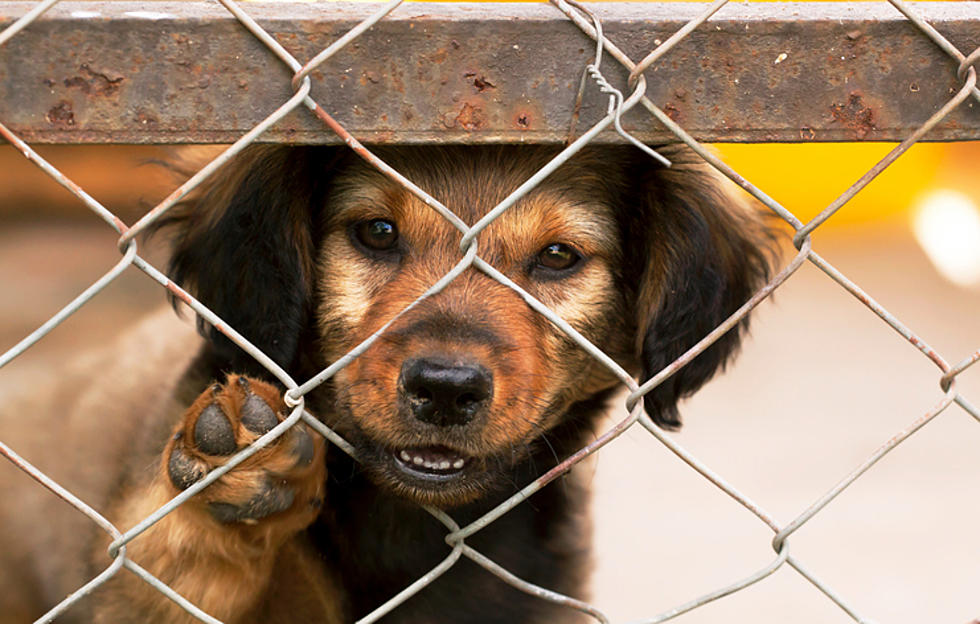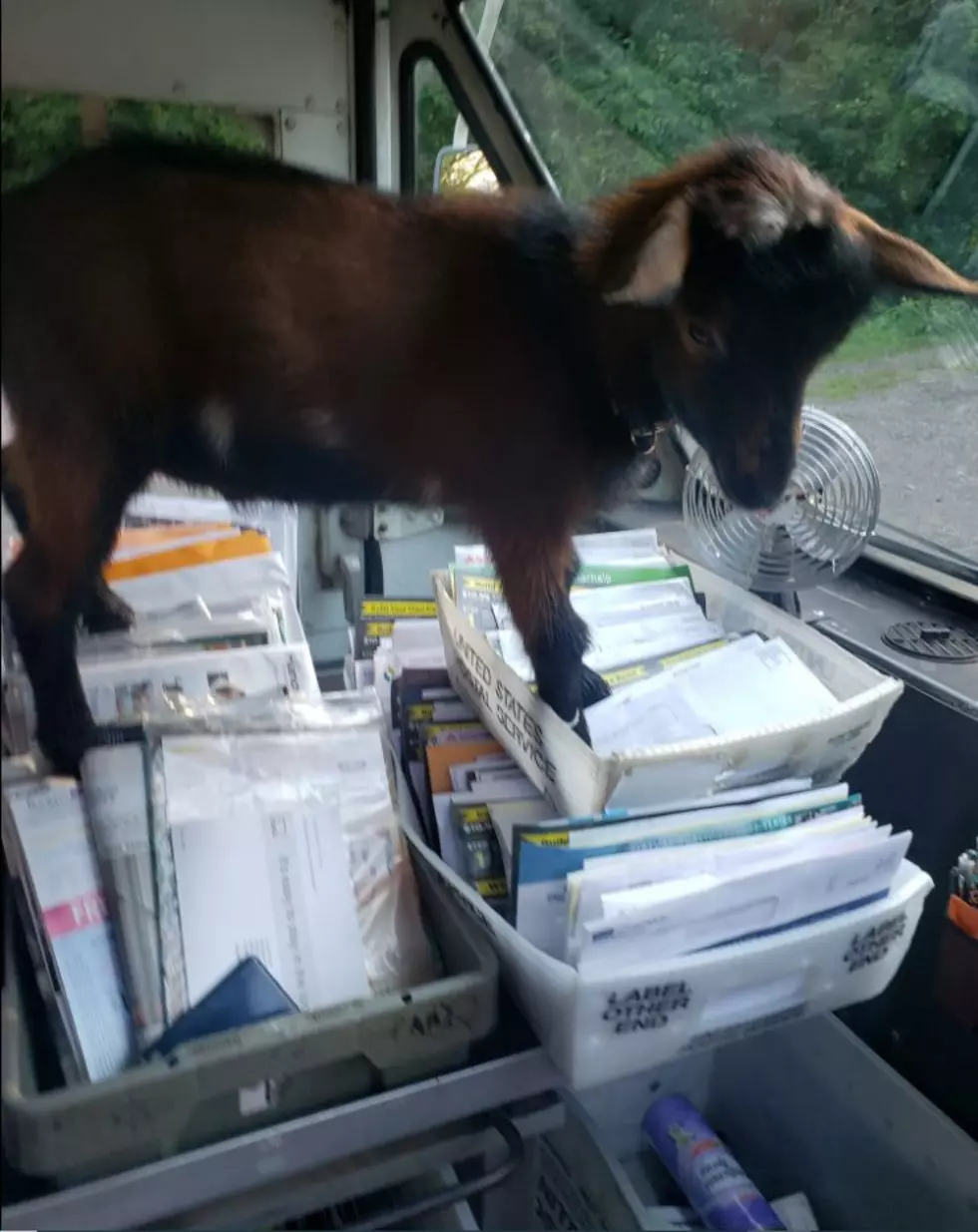
Kalamazoo County Animal Euthanasia Rates Are Shocking
Shocking euthanasia rates in Kalamazoo dampen celebration on Michigan 'No Kill" status.
Deborah Schutt recently posted this on the Michigan Pet Fund Alliance facebook page,
Last week the Michigan Pet Fund Alliance announced that Michigan shelters achieved a combined live release rate of 90%, a benchmark for determining No Kill. Reducing the killing in Michigan shelters from 120,000 to just over 13, 000 in 10 years is an incredible accomplishment by thousands of people on the ground – no shelter did it on their own.
As many shelters have made changes that dramatically improved their live release rate. Many animals are being euthanized here in Kalamazoo county. The 2018 Annual Individual Michigan Animal Shelter Reports showed shocking numbers.
| Name | Position | Height | Weight | Hometown/Previous School |
| K.J. Anderson | DB | 6' | 170 | Buford, GA/ Buford HS |
| Trevor Campbell | OL | 6'5" | 280 | Naperville, IL/ Naperville Central HS |
| ^Na'Jee Clayton | LB | 6'1" | 230 | Paramus, NJ/ Rutgers |
| Dwayne Chapman | LB | 6' | 210 | West Bloomfield, MI/ Orchard Lake St. Mary's HS |
| Dylan Deatherage | OL | 6'6" | 255 | Kankakee, IL/ Bishop McNamara |
| Zenden Dellinger | OL | 6'6" | 260 | Fort Wayne, IN/ Snider HS |
| Mohammad Elazazy | OL | 6'5" | 310 | Menasha, WI/ Menasha HS |
| Ali Fayad | DL | 6'2" | 230 | Dearborn, MI/ Dearborn HS |
| Reece Goddard | QB | 6'2" | 210 | Kirkwood, MO/ Kirkwood HS |
| Josh Grant | K | 6' | 185 | Flower Mound, TX/ Flower Mound HS |
| Jaylen Hall | WR | 6'4" | 165 | Macomb, MI/ Macomb Dakota HS |
| ^Treshaun Hayward | LB | 6'1" | 210 | Ypsilanti, MI/ Ann Arbor Skyline HS |
| Ralph Holley, Jr. | DL | 6'2" | 270 | West Bloomfield, MI/ Orchard Lake St. Mary's |
| Derrick Hubbard | LB | 6'2" | 202 | Ypsilanti, MI/ Ann Arbor Pioneer HS |
| Dez Lance | DL | 6'2" | 265 | Armada, MI/ Sterling Heights Stevenson HS |
| Ryan Lezzer | WR | 5'11" | 190 | Clearfield, PA/ Clearfield HS |
| Tanner Mathias | DE | 6'4" | 240 | Menominee, MI/ Menominee HS |
| Corvin Moment | LB | 6'1" | 220 | Pahokee, FL/ Pahokee HS |
| Tanner Motz | LB | 6'3" | 195 | St. Johns, MI/ St. Johns HS |
| Tom O'Mara | OL | 6'3" | 265 | Chicago, IL/ Marist HS |
| Luke Sanders | WR | 6'4" | 180 | Fishers, IN/ Cathedral HS |
| A.J, Thomas | DB | 6'3" | 170 | Detroit, MI/ U of D Jesuit HS |
| Prince Walker | RB | 5'10" | 180 | Naperville, IL/ Montini Catholic HS |
| *Jack Darby | LS | 5'10" | 240 | Batavia, IL/ Batavia HS |
| *Izaak Gerkis | P | 5'8" | 176 | Birmingham, MI/ Birmingham Seaholm HS |
| ^ - Enrolled at WMU in January 2017 *-Walk-on | ||||
You'll notice above that the number of dogs and cats killed is dramatically higher for Kalamazoo County Animal Services and Enforcement than any other. Yes, they have a high intake of animals. But it still doesn't warrant the high number of euthanized animals. To put it in perspective, the Humane Society of West Michigan in Kent County has received more dogs and cats but euthanized far less as seen below.
| Then | Now |
|---|---|
| Horses were the main mode of transportation for troopers in 1917 and the department's entire motor fleet consisted of four unmarked staff cars, two supply trucks and an armored truck. | The MSP fleet contains over 2,220 vehicles today with a variety of makes, models and purposes. Today's fleet also includes dive boats, helicopters and motorcycles. |
| Two-man mounted detachments rode daily patrols of 15 to 35 miles, returning to their barracks each night. | Today, troopers on average drive over 125 miles during their daily patrol. |
| In 1917, troopers wore a khaki and forest green uniform consisting of military tunics with breeches, leather puttees, and either a Campaign-style hat or a Stetson. | Today, troopers wear a dark blue and grey uniform that became the standard in 1961, along with a Campaign-style hat that was recently added in recognition of the department’s 100th Anniversary. |
| In 1917, lacking any other means of communication, troopers had to check for telegram messages at the post office of each town they visited. | Today, troopers communicate using smartphones, mobile data computers and 800 MHz radios. |
| Capt. Ira H. Marmon opened a Bureau of Investigation and Identification at the East Lansing Headquarters in 1919 using a primitive fingerprint records file in an old shoebox that he stored under his barracks cot next to his desk. | Today, fingerprint records are stored in the Automated Fingerprint Identification System (AFIS) database, which contains over 3.6 million records |
| In 1918, troopers rendered aid in six automobile wrecks. | In 2016, troopers rendered aid in 43,488 traffic crashes. |
| In 1918, troopers made 2,937 arrests. | In 2016, troopers made 72,695 arrests |
In the report from Kalamazoo County Animal Services and Enforcement they site "389 Unadoptable" animals. I reached out to Stephen Lawrence, Director of the Kalamazoo County Animal Shelter multiple times to inquire about the "unadoptable" pets and why their euthanasia rates are so high. Mr. Lawrence provided the following statement,
The data the state provides in these reports is very misleading for many reasons. First, there is no consistent way these reports are filled in by every licensed animal shelter in the state. The state says you must include owner requested euthanasia in the numbers but are very vague on where they can be entered and then a box must be checked if you did include them or did not include them. Also, every licensed shelter in the state is different, no two are alike in what they do or how they do it. Some of these shelters are sanctuaries that do not euthanize any animal placed in their care, some are rescues that only deal with one species or one breed. Animal controls are all different, some work under a Sheriff’s Department, some under a Health Department, some under Vector control, some are stand alone. Some of these shelters offer euthanasia services to the public, some do not. Some have stopped taking in cats to lower their euthanasia numbers like many of the counties around Kalamazoo. This leaves their citizens who find stray cats, have cat hoarding issues, or cat nuisance issues, or breeding barn and feral colonies no help with their problem. In our case, these people then bring the cats to our county for help. Sometimes they are honest and tell us they are from out of county, and sometimes they claim they found them in our county. Either way, I am left to do what is best for the animal and take the cat in. If I don’t, these people who have already been turned away by their own county and then traveled all the way to our county for help, will not take the cat or cats back to their county if I turn them away. They will release the cat in our county at the nearest barn or worse, they may try to fix the problem in an inhumane way.
Michigan's Political Action Committee For Animals had this to say about the numbers,
For at least the last two years, perhaps more, Kalamazoo County Animal Services and Enforcement has either submitted fraudulent annual report information to the state of Michigan or are practicing unethical conduct and ignoring state-mandated stray holds. For both 2017 and 2018, the total number of dogs and cats adopted, returned to owner, transferred and euthanized equals the intake. That's not possible in the real world. It is, in fact, statically impossible for the annual intake to repeatedly equal the disposition. Every shelter will house animals from one year to another. No shelter has zero animals at the end of every year unless the shelter is killing all animals at the end of the year, in which case the public should be made aware that this is how their tax dollars are being used.
We also heard from Julie Barber, Director of Community Connections at the Kalamazoo Humane Society. Barber explains that the reason why the number of euthanized animals is so high is due the public surrendering their pets for the low cost euthanasia services,
These animals come in and they can't say no because it's a service the provide to the public. It's their obligation to the public to do that.
I asked Julie if she would support a change in the law/policy that requires KCASE (Kalamazoo County Animal Service and Enforcement) to accept and euthanize any animal turned into them and she responded,
I actually wouldn't. When these people don't have anywhere else to go. They do bad things to their pets. They dump them off, they neglect them, they abandon them, they let them suffer needlessly.
She goes on to explain that it could cost a person $250 to put a pet down when it costs $40 at the shelter.
Barber feels the numbers on the state report are not accurate because they do not reflect the animals surrendered by their owners to be euthanized or the number of animals deemed "unadoptable" by the shelter staff.
I respectfully disagree with this "unadoptable" category. I have a pitbull that in an animal shelter situation would definitely be considered "unadoptable" but is the most lovable big dog you'll ever meet. Which may be why other shelters in the state are not categorizing animals as "unadoptable" in their reports.
Most of the the animal shelters in the state of Michigan have taken great strides over the years to make this happen. Sometimes it takes minor changes with-in a shelter like larger cages for cats. Having cats in a separate area than the dogs and giving them larger cages or even connecting cages is a dramatic stress reliever for cats. Cats can be so stressed due to their surroundings that they remain sick until they are adopted or euthanized. Other times it can be a change in policy.
For example, Deborah Schutt tells us that instead of housing then euthanizing feral cats, the best way to combat the population problem is to spay and neuter the feral felines and put them back where they were found. Many areas have seen great results with this.
There are many steps, some big and some small, that can be taken to prevent the deaths of over a thousand pets each year here in Kalamazoo County. Are we doing everything we can? If not, what is standing in our way?
Julie Barber and I agree that the community does need to step up to help prevent dog and cat over population. However, I think a big piece of that should be coming from services and programs from the county to help the community in prevention. I personally would rather see tax money go toward spay and neuter services and education programs instead of low cost euthanization for hundreds of animals each year.
Barber mentions the following ways the community can help prevent right rates of euthanasia:
Support spay & neuter! The Kalamazoo Humane Society is holding it's annual Reverse Raffle on October 18! Tickets are $100 and support our low-cost spay/neuter program. This event is critical to the budget of our spay/neuter program and we need to sell out by October 17! Click here for more info.
Foster! Find a local rescue group and get qualified to be a foster! Fosters are a great place for pets that need extra work before being adopted. Many dogs do not do well in shelter environments or have special needs that are better managed in a home setting.
Volunteer! Rescues and shelters are usually in need of volunteers to help with everything from cleaning, to walking pets, to grooming! Even volunteers with office, event management or fundraising skills are needed!
Donate! Money doesn't solve all the problems, but it helps! Monetary donations and pet supplies are in high demand at KHS, and all other rescue groups and shelters. You can also sponsor a spay or neuter surgery, organize a pet food drive or bottle driver at your work/school/church/neighborhood, donate gift cards to local pet supply stores, or even sponsor or attend fundraisers for local animal welfare groups!
I realize this is a hot button issue. It's important to understand that this story is not meant to target the hard working staff and volunteers that are doing great work at KCASE. However, the director of the KCASE and the County Administrator should know that tax dollars going to putting animals down could be better used to take care of animals, educate the public and prevent over population, similar to what other counties are having success with.
If you're a Kalamazoo County resident and these numbers seem alarming to you, please email the County Administrator Traci Moored tlmoor@kalcounty.com.
More From WKMI






